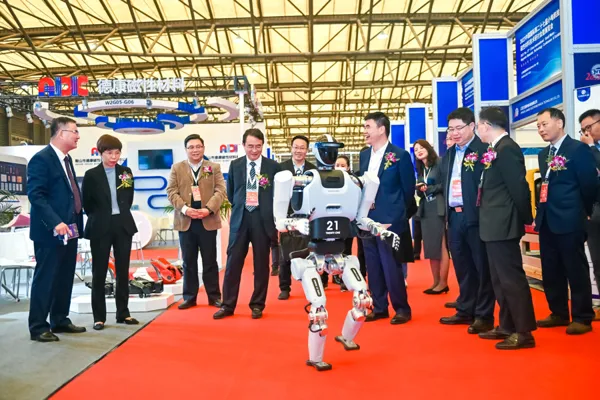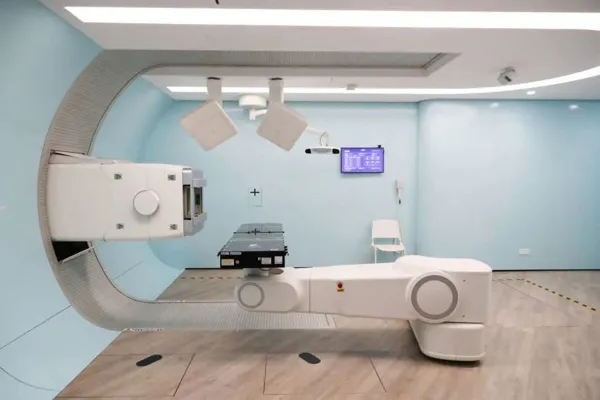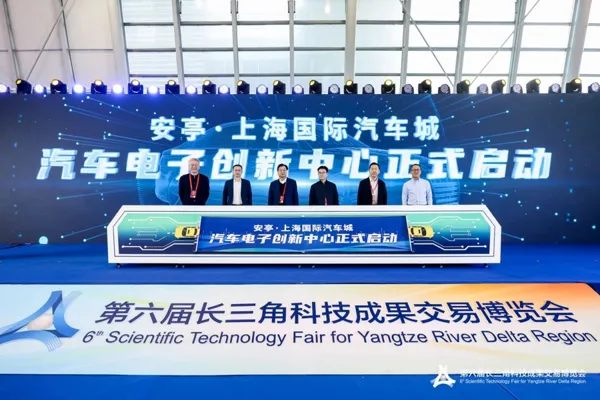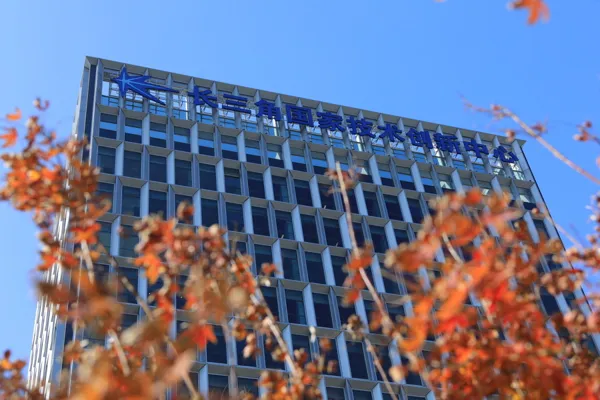How far are we from universal AI robots? , China Electronics Technology Corporation releases its first generation humanoid robot
With the advent of Tesla's humanoid robot "Optimus Prime" and the large artificial intelligence model ChatGPT, general-purpose humanoid robots have become a popular track in the world's cutting-edge technology. At the 27th China Small Motor Technology Seminar and Exhibition held in Shanghai recently, the first-generation humanoid robot developed by the 21st Research Institute of China Electronics Technology Group Corporation was unveiled, attracting attention in the industry.
How far away are universal humanoid robots from our lives? Dr. Jiang Zhiyong, head of humanoid robot research and development at the 21st Institute of China Electronics Technology, believes that at present, many humanoid robots that have been released by domestic companies are basically in the same level range, with little difference between each other. They are all still a long way away from commercially available general-purpose intelligent services. distance. In the future, domestic enterprises must continue to accumulate technology and invest in talents to achieve "from quantity to quality" and make humanoid robots equipped with AI brains a powerful assistant in our lives.
After ChatGPT was released last year, people saw the dawn of general artificial intelligence. The so-called general artificial intelligence means that artificial intelligence can do many things like humans and is no longer limited to certain specific tasks. The general artificial intelligence that these software systems are expected to achieve is not "general" enough for large models, because they are equivalent to human brains, but without bodies, unable to perform physical labor with intelligent participation. And we can see from daily life: intelligence originates from the brain, but it is also inseparable from the body. Human movement, perception and other abilities are also components of intelligence.
Therefore, technology experts such as Vice Minister of Science and Technology Wu Zhaohui and NVIDIA CEO Jensen Huang predict that the next wave of artificial intelligence research and development will be "embodied intelligence." The so-called "embodied intelligence" combines artificial intelligence algorithms with the robot's perception, movement and environmental interaction capabilities, so that the robot can complete various tasks in industrial and service application scenarios in a smarter and more natural way.
The humanoid robot appeared at the China Small Motor Technology Seminar and Exhibition.
The industry generally believes that the preferred carrier for realizing "embodied intelligence" is humanoid robots, because compared with other forms of robots, humanoid robots are more suitable for operating in human working and living environments and can directly use various tools invented by humans. On the other hand, they appear more approachable when communicating with humans, and are suitable for life service industries such as housekeeping and health care.
This year, many domestic companies such as iFlytek, Xpeng Motors, Fourier Intelligence, and Zhiyuan Robotics have released independently developed humanoid robots, moving towards the long-term goal of "embodied intelligence" and universal robots. As a central enterprise in Shanghai, China Electronics Technology Research Institute 21 also released a prototype under development. This humanoid robot is 1.62 meters tall, weighs 60 kilograms, has 39 degrees of freedom, has a maximum load of 5 kilograms on one arm and 10 kilograms on both arms, and a maximum walking speed of 5 kilometers per hour. It can walk stably on uneven roads such as slopes, gravel, and grass, and has the ability to handle dexterously such as holding a water cup and moving boxes.
At the 27th China Small Motor Technology Symposium and Exhibition, the black-and-white, cool-looking humanoid robot demonstrated its ability to walk, turn, etc. It had a very stable base, attracting the audience to take out their mobile phones to take photos of it.
Humanoid robots have demonstrated abilities such as walking and steering.
Dr. Jiang Zhiyong introduced that the R&D team deployed a visual recognition and perception system and a motion planning algorithm in the robot, giving it the ability to recognize objects and dynamic obstacle avoidance. In the future, it can be applied to smart logistics, industrial manufacturing, security patrols, emergency rescue, etc. Scenes. At present, the R&D team has completed the computer algorithm simulation work, and the voice module is under development. In the future, it will be able to understand human voice commands and complete related tasks. For example, if the user says "Please pour me a glass of water," it will go to the water station and bring the cup filled with water to the user.
From the perspective of the long-term goal of "embodied intelligence" and universal robots, the humanoid robot research and development team needs continuous technical research. "Compared with Boston Dynamics, which has nearly 40 years of technology accumulation, domestic companies still have a gap. They must improve the motion control and balance capabilities of robots as soon as possible. In short, it is necessary to make humanoid robots walk, walk steadily, and It must have dexterous operation capabilities. "Jiang Zhiyong analyzed that it is very difficult for robots to move stably in various environments and conditions. For example, when walking on uneven roads such as slopes, you must maintain balance; when walking under load-bearing conditions such as carrying items, the dynamic model will change and you must maintain balance; after long-term operation, the robot's joints will heat up, which There are also technical issues that need to be addressed.
Boston Dynamics' robots dance. /American League
In addition, the battery life of most domestic humanoid robots under full load operating conditions does not exceed 2 hours. Extending the battery life and solving the ensuing problem of joint heating and degeneration is one of the important indicators for the commercialization of humanoid robots. "The basis for developing universal AI robots is to build a mature humanoid robot platform. Otherwise, no matter how developed the AI brain is, it will not be able to complete the task." Jiang Zhiyong said.
Judging from the commercial goals in a relatively short period of time in the future, robot companies must find suitable application scenarios for humanoid robots based on research. The R&D team of CETC 21 conducted research in logistics equipment companies for a month and found that humanoid robots have great potential in the sorting and handling aspects of the logistics industry. At present, these two links are mainly operated manually, but they are very mechanical and cannot be replaced by traditional robotic arms. After testing the entire machine, the R&D team believes that the humanoid robot is capable of both tasks - sorting goods with visual recognition capabilities and then moving them to the AGV with dexterous hands.
In the future, China Electronics Technology Institute 21 plans to put humanoid robots into smart logistics application scenarios to "liberate" workers from mechanical work.




